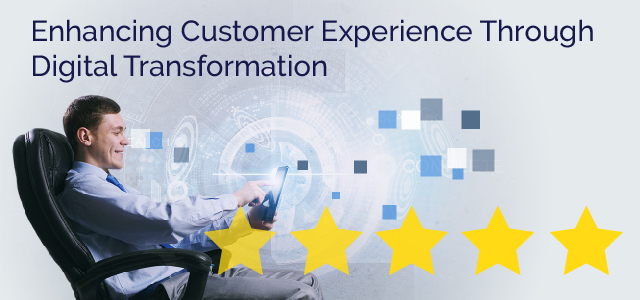Enhancing Customer Experience Through Digital Transformation
Estimated reading time: 5 minutes
It’s becoming more clear with every passing day that in order to keep up with the “always-connected” customer, your business must embrace technology to deliver an unmatched customer experience. Research shows that 35% of business executives claim that digital transformation helps them to better meet customer expectations and improve operational efficiency (40%), and 38% of executives plan to invest more in technology to make it their competitive advantage.
To highlight the importance of placing customer experience at the top of your priority list, we invited Nick Glimsdahl, Director of Contact Center Solutions at VDS to AdVic’s “Salesforce Simplified” podcast to speak about bringing together digital transformation, customer expectations and business objectives to create effortless customer experiences. Here are some highlights from that conversation.
The Definition of Customer Experience
According to Glimsdahl, “Customer experience is the experience that a consumer receives and or feels resulting in an emotional reaction. And sometimes it could be, I am beyond excited that you solved my problem. You knew who I was. And you did it in record time. It could be the whelmed, you’re not overwhelmed, you’re not underwhelmed. You’re just whelmed, and that was not a great experience, or it wasn’t a bad experience, but it just solved my problem. And it was ‘meh.’ And then there’s the absolute worst where it’s, you’re frustrated, and that not only is the chance that somebody could not do business with you anymore, but then they’re going to go out and tell their friends, they’re going to potentially tell social media, and you now have the opportunity or the risk of losing that customer.”
When Should Companies Make Improvements to Customer Experience?
Glimsdahl, who also speaks on customer experience, employee experience, and digital transformation, among other things on his own podcast, Press 1 For Nick, offered this on knowing when to improve your customers’ experiences: “The first thing I would say is, have you actually walked in your customer shoes? Have you gone through the customer’s journey from the very beginning? How do I find your company? And then what are the steps that I have to go through to identify if it’s the right fit or not? And then where are the friction points inside that journey that need to be addressed? And it doesn’t matter how amazing, if you are the Zappos of your industry, everybody’s going to have friction points or ways that you can improve that experience.”
Encouraging Companies to Invest in a Digital Transformation
“The ‘Great Resignation’ is here,” Glimsdahl remarks. “I’ll start there because people are worried about hiring, training and retaining their talent. And if you can keep that talent, the reason why you keep that talent is because they feel also known and valued, and they have the ability for that upward mobility, and that growth, and that roadmap internally, they feel like they’re being cared for. And it’s not just because they have an amazing “culture” but they know where they’re going. And they feel like they have a place and they know their why. And the customer experience is a direct correlation in how you treat your employees, because that’s how your employees will treat your customers. And so I would say that if you don’t treat your employees, if you don’t have the right technology, if you don’t have the right process, then the people are just going to be frustrated.”
Creating a Customer Experience Strategy
While Glimsdahl offered several suggestions to companies about creating a customer experience strategy, he started here: “The strategy, I believe, should align with your outcomes, should align to who you are and what you’re trying to achieve holistically at the very top. What are your business objectives? What are your mission, vision, and values? From there, that’s where you should start. From there, you should understand where you’re at today. What are the metrics that you’re implementing that you’ve implemented and how are you measuring them? And then how are you acting upon that? So you have a baseline. You also need to truly understand and interview your front line to hear what your customers are saying. Then go talk to your customers. What are they saying? And then you take all of this information, you bring that to the senior leadership team, or the people who are involved in this project. And you’re saying based off of the information that we have, what is that priority? What are we trying to achieve? And what’s most important to us? What’s the most important to our customers?”
Listen to the entire “Salesforce Simplified” podcast with Nick Glimsdahl
If your company is struggling with growth, creating better customer experiences, or it takes numerous team members to execute manual processes that could be solved with automation, it’s time to consider a digital transformation…and it doesn’t have to be a difficult process. Let AdVic® show you how. Book a time to chat on our calendar now.
Related Resources:
Enhancing Customer Experience Through Digital Transformation – Podcast
Top Brands Do This to Create an Effective Customer Experience
Digital Transformation 101: Your Questions Answered
Five-Steps to a Successful Digital Transformation
Preparing for a Digital Transformation
Subscribe to the AdVic Salesforce Blog on Feedly:



